Cornish Pasties with tender peppery chunks of beef mixed with melt-in-your-mouth vegetables, all wrapped up in buttery golden pastry. The Cornish Pasty is one of the most famous foods to come out of the south of England, and I can completely understand why the Cornish folk have so much pride in this tasty hand-held meal.
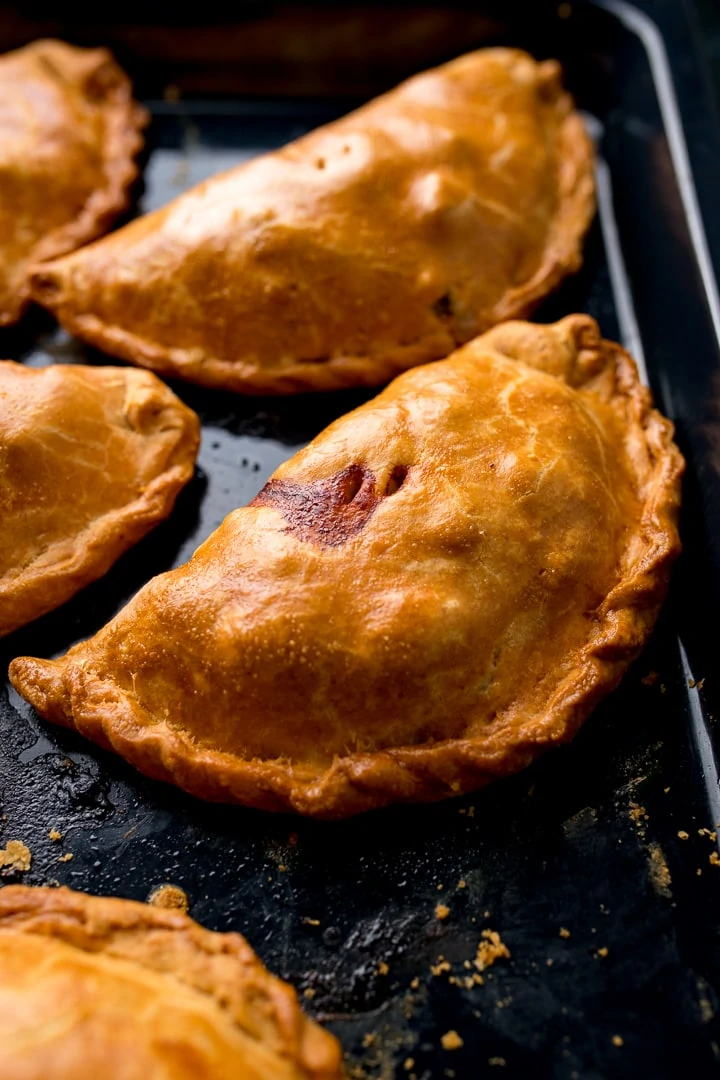
We love visiting Cornwall and often take little trips down south to wander around beautiful little coastal towns.
We often eat a fair few Cornish pasties when we’re there.
In fact Gracey shockingly announced on one occasion that she’d rather have a Cornish pastie than an ice cream!
She was delighted when I told her I’d teach her how to make them.
The Cornish pasty goes back hundreds of years, but they’re most commonly known to have been a staple food of the poorer classes going back to the 18th century. Miners used to take the pasties into the tin mines, and they’d be nutritious and filling enough to keep the workers going all day.
The specific shape of the pastie was thought to have come around for good reason too.
The crimped crust on the side was used as a kind of handle. The levels of arsenic in the tin mines meant that the miners hands would be grubby and likely covered in this highly toxic substance. So the miners would hold onto the crust to eat their pastie, and then discard it.
Personally I love the crust, but I think I could be persuaded to chuck it away if it was covered in arsenic!!
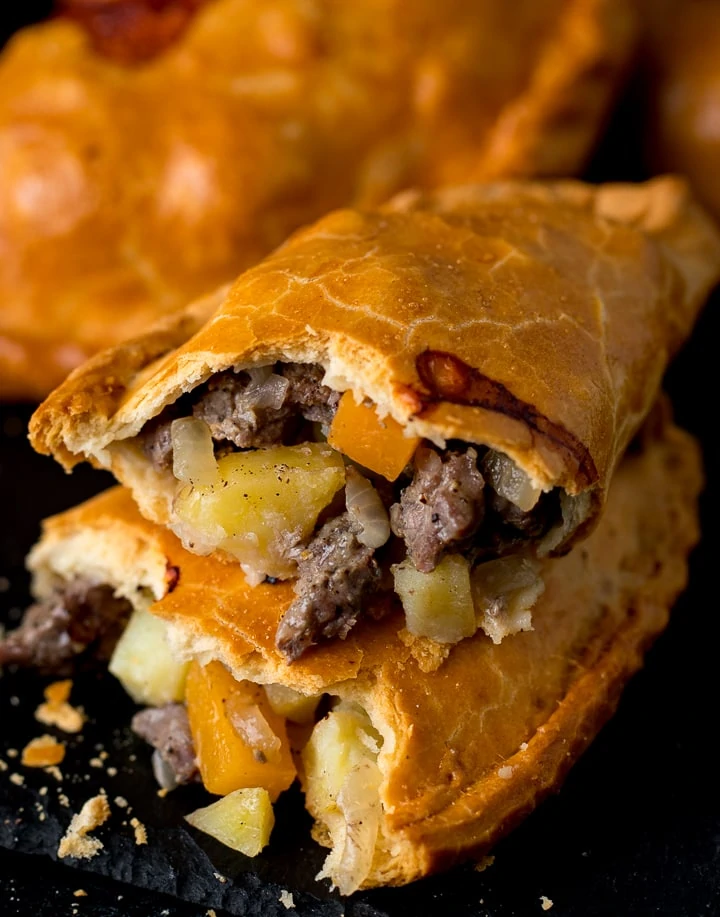
These Cornish Pasties are filled with a mixture of well-seasoned steak, onions, potatoes and swede (or rutabaga/yellow turnip if you’re in the US). The meat and vegetables are placed in the pastry raw, with a really good pinch of salt and pepper and a few dots of butter, then sealed and cooked in the pastry. There’s no sauce inside a Cornish pasty, but the cooked filling ends up so tender and moist that it’s not needed.
What do we need
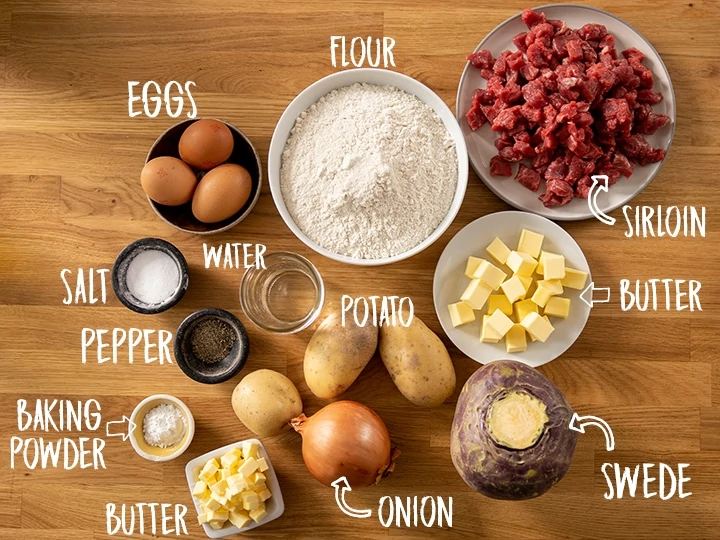
How to make the shortcrust pastry
This is a basic shortcrust pastry, so you can replace with shop-bought if you prefer.
- Place flour, baking powder and salt into a food processor and give a quick mix.
- Add in cubed butter and whizz until the mixture turns into breadcrumbs.
- Add in egg yolks and mix, then, with the motor on, add in water a bit at a time until the dough comes together into a ball.
- Wrap the pastry in clingfilm or wax paper (<– affiliate link) and refrigerate for an hour.
- Roll out the pastry and cut circles into the dough using a side plate as a template.
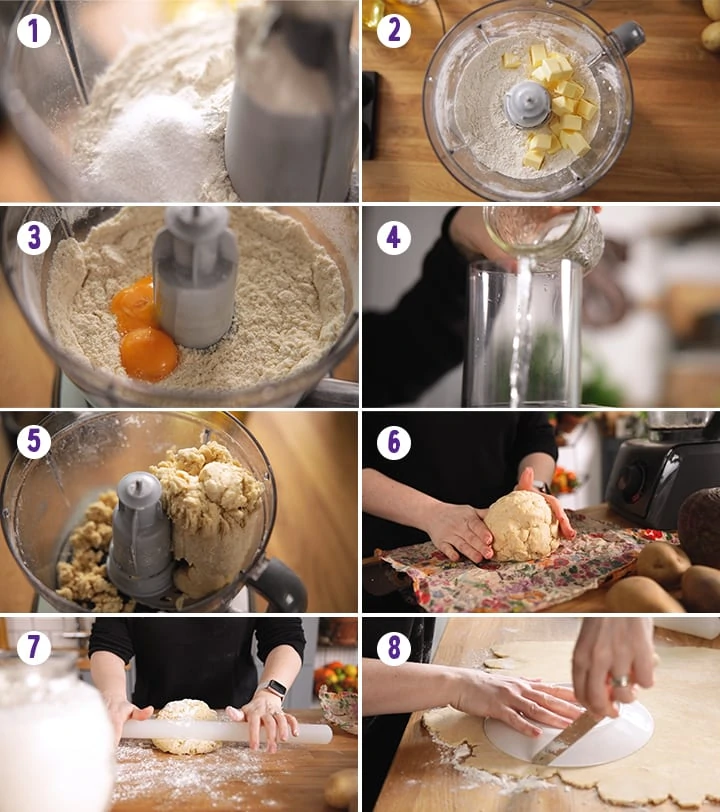
Making the pasties
Full ingredients, quantities, timings and temperatures in the recipe card at the bottom of the post.
- Mix cubed potato, swede/rutagaba, onion, steak, salt and pepper in a large bowl.
- Place a really good handful of the mixture onto on side of one of the pastry circles and dot a little butter on top.
- Brush egg wash around the edge of the pastry circle and fold the other side of the pastry over the meat until the edges meet and you have a semi-circle.
- Seal firmly and crimp with your fingers (check out my video below to see how to do this).
- Make a little hole in the top of the pasty using a sharp knife to let out the steam. Repeat with the remaining pasties and then brush egg wash over the top of all the pasties.
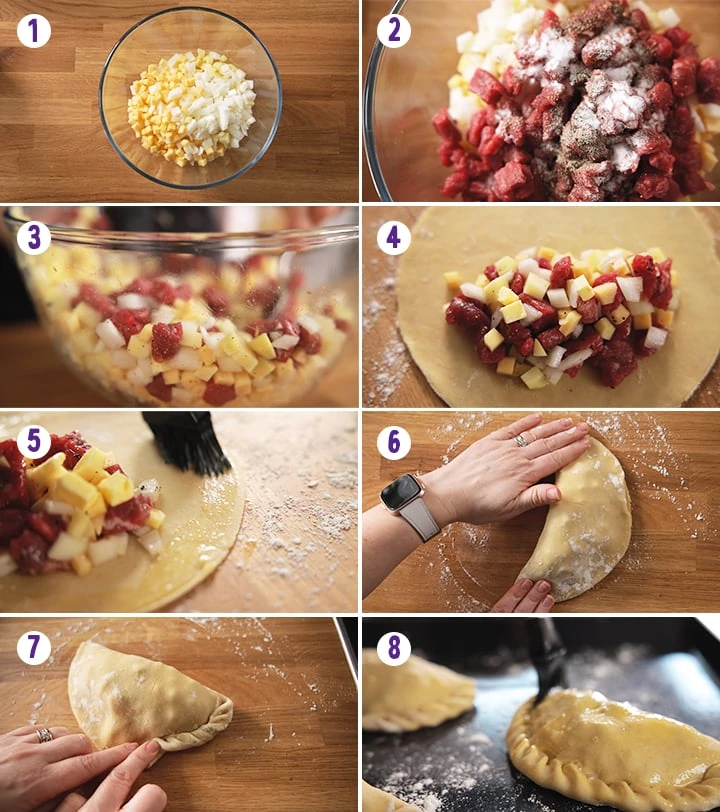
Bake for 50 minutes until golden brown.
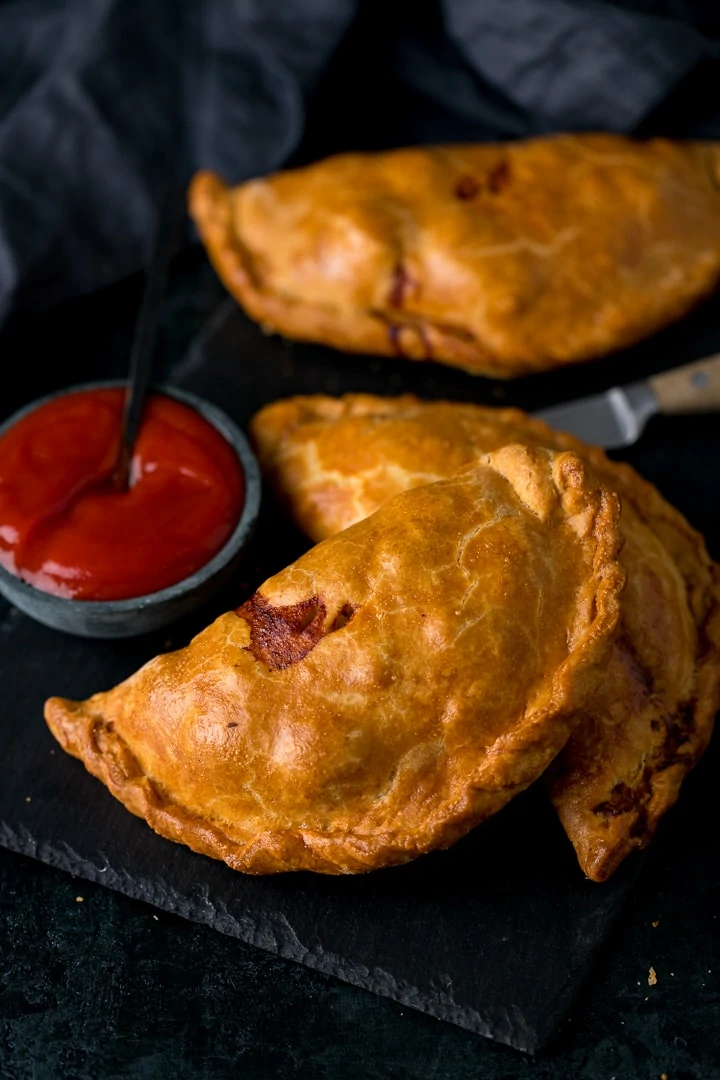
You mean you add the meat raw?
Yes! We’re using a good quality cut of beef, so it only needs the light cooking inside the pasty. The juices that are released from the meat during cooking will flavour the veggies and make the filling lovely and juicy.
The best cut of beef for Cornish Pasties
Skirt steak, sirloin or ribeye are the best cuts for the most tender and juicy meat for a Cornish pasty filling.
Note: skirt steak can be a little on the tough side, but small pieces that have been cut against the grain will still be plenty tender enough.
Don’t be tempted to use braising/chuck/stewing beef or the meat will be chewy and tough.
Why don’t they have any sauce/gravy?
The cooking of the meat releases lovely flavoured juices in the pasty. A gravy just isn’t needed!
Besides, ketchup for dipping is a MUST for a Cornish pasty. Well, that’s my opinion anyway.
More Picnic Ideas
Making these as part of a picnic? Here are some more picnic ideas
- French pressed sandwich bites
- Coronation Chicken
- Chorizo Scotch Eggs
- Chicken and Chorizo Puff Pastry Rolls
- Creamy Potato Salad
- Tear and Share Sausage Rolls (or Vegetarian Sausage Rolls)
- Salted Caramel Millionaires Shortbread
- Banana Bread Energy Balls
The Recipe Video:

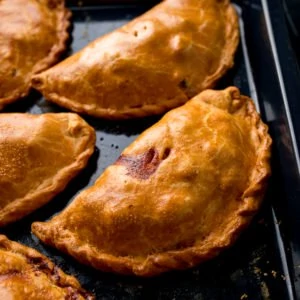
Cornish Pasties
Ingredients
Pastry:
- 450 g (3 2/3 cups) plain (all-purpose) flour plus a couple of tbsp extra for rolling out the pastry and sprinkling on the tray later
- 2 tsp baking powder
- 1 tsp salt
- 125 g (1/2 cup + 1 tsp) unsalted butter chopped into chunks
- 2 egg yolks
- 125 ml (1/2 cup + 1 tsp) cold water
Filling:
- 450 g (1 lb) potato peeled and finely diced
- 150 g (1/3 lb) swede/rutagaba peeled and finely diced
- 150 g (1/3 lb) onion peeled and finely chopped
- 300 g (2/3 lb) skirt steak or sirloin steak finely chopped, with fat discarded (weigh the meat after discarding the fat)
- 1 tsp salt
- 1 tsp ground black pepper
- 3 tbsp unsalted butter chopped into small cubes
- 1 egg beaten
Instructions
- First, make your pastry. Place the flour, baking powder, and salt into a food processor and give a quick mix.450 g (3 2/3 cups) plain (all-purpose) flour, 2 tsp baking powder, 1 tsp salt
- Add in the butter and whizz until the mixture turns into breadcrumbs.125 g (1/2 cup + 1 tsp) unsalted butter
- Add in the egg yolks and mix, then, with the motor on, add in the water a bit at a time until the dough comes together into a ball. You may not need all the water.2 egg yolks, 125 ml (1/2 cup + 1 tsp) cold water
- Take the pastry out of the food processor, wrap it in clingfilm or wax paper (<–affiliate link) and refrigerate for an hour.
- Preheat your oven to 180C/350F (fan). Take two large baking trays and sprinkle them with some flour.
- Take your pastry out of the fridge and roll it out on a floured surface until you get a thickness you can cut, that won't tear easily. I find that's about 3mm.
- Cut circles into the dough using a plate that is about 20-21cm (approx 8") in diameter as a template. I find that I get 3 circles out of the first lot. Then I re-roll and get 2 circles, and then I re-roll and get one final circle. You can place the circles stacked onto a plate so long as you have a sprinkling of flour between each layer.
- In a large bowl, mix your potato, swede/rutagaba, onion, steak, salt, and pepper.450 g (1 lb) potato, 150 g (1/3 lb) swede/rutagaba, 150 g (1/3 lb) onion, 300 g (2/3 lb) skirt steak or sirloin steak, 1 tsp salt, 1 tsp ground black pepper
- Take one of your pastry circles and place it onto your work surface. Place a really good handful of the meat mix onto half of the circle, leaving a 2cm border around the edge. It'll look like a lot of mixture, but it needs to be packed full.
- Dot 1 1/2 tsp butter (from the 3 tbsp butter) on top of the meat and veg pile.3 tbsp unsalted butter
- Take your beaten egg, and using a pastry brush, paint a little of the egg wash around the edge of the circle. This will help the pastry stick together.1 egg
- Now, fold the other side of the pastry over the meat until the edges meet and you have a semi-circle. Seal firmly and crimp with your fingers (check out my video above to see how)
- Place your pasty onto your baking tray and make a little hole in the top using a sharp knife to let out the steam. Repeat with the remaining pasties.
- Brush the remaining egg wash over the top of the pasties and place in the oven for 50 minutes until golden brown.
- Take out of the oven and leave to cool for 5 minutes before eating.
Video

Notes
Can I make them ahead?
Yes, make and cook the pasties, then cool, cover and refrigerate them. Reheat in the oven, uncovered, at 190C/375F for 30 minutes, until piping hot throughout.Can I freeze them?
Yes, make and cook the pasties, then cool, cover and freeze. Defrost in the refrigerator overnight. Reheat in the oven, uncovered, at 190C/375F for 30 minutes, until piping hot throughout.Can I use shop-bought pastry?
Yes, you can replace the homemade pastry with shop-bough shortcrust pastry.The best cut of beef for Cornish Pasties
Skirt steak, sirloin or ribeye are the best cuts for the most tender and juicy meat for a cornish pasty filling. Note: skirt steak can be a little on the tough side, but small pieces that have been cut against the grain will still be plenty tender enough. Don’t be tempted to add braising/chuck/stewing beef or the meat will be chewy and tough. .Recipe Source:
Adapted from a Hairy Bikers recipe Nutritional Information is per pasty.Nutrition
Nutrition information is automatically calculated, so should only be used as an approximation.
This post was first published in August 2014. Updated in April 2020 with new photos, tips and video.
More British Classic Recipes
Some of the links in this post may be affiliate links – which means if you buy the product I get a small commission (at no extra cost to you). If you do buy, then thank you! That’s what helps us to keep Kitchen Sanctuary running. The nutritional information provided is approximate and can vary depending on several factors. For more information please see our Terms & Conditions.
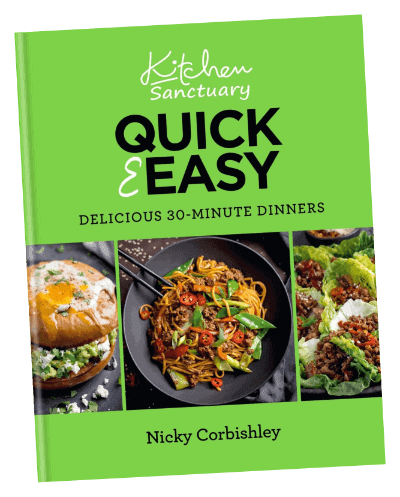
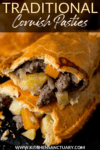
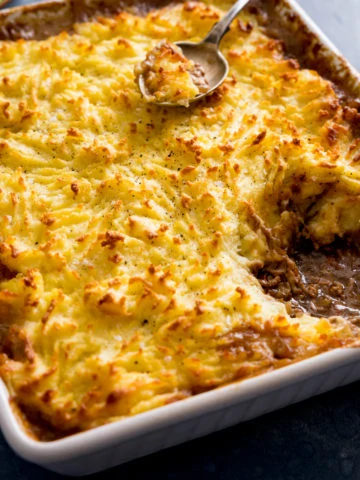
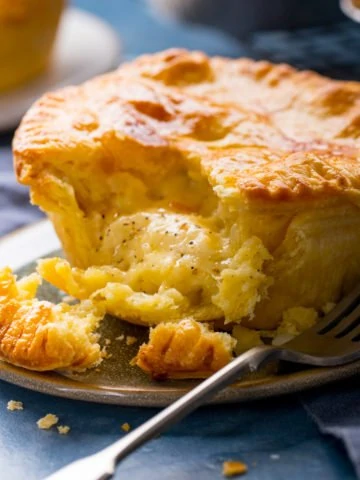
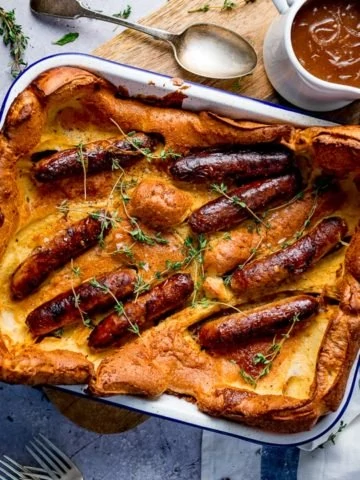
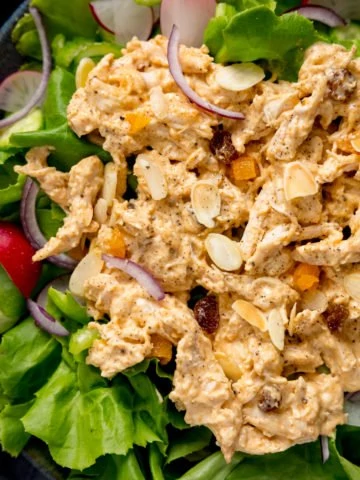
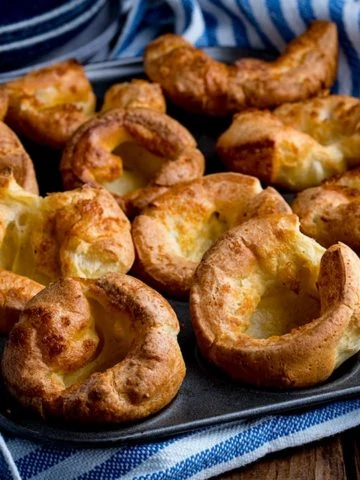
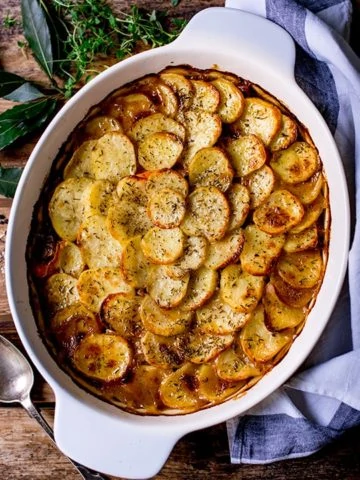

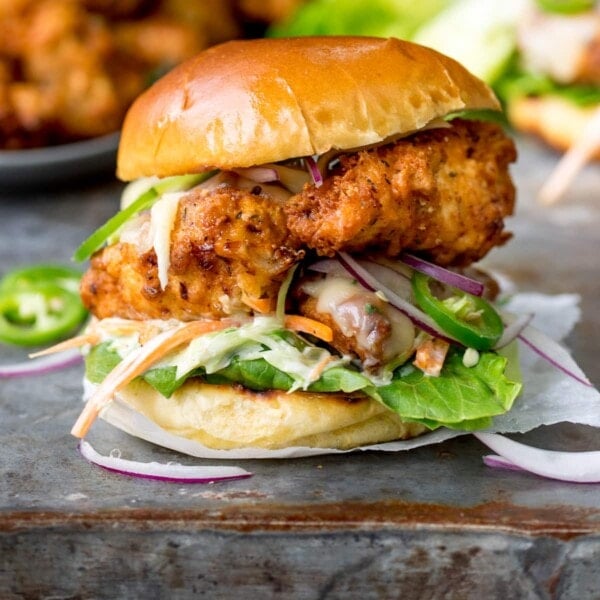
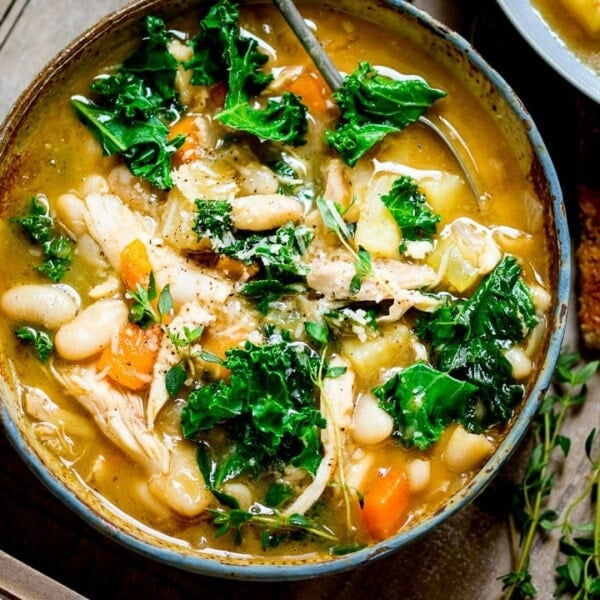
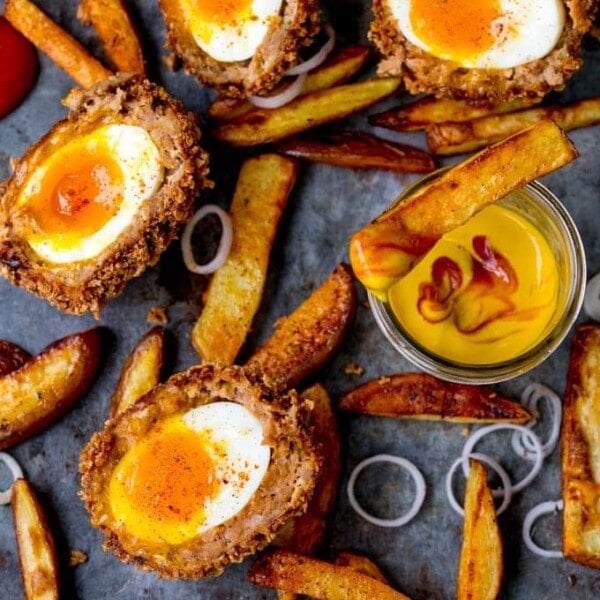
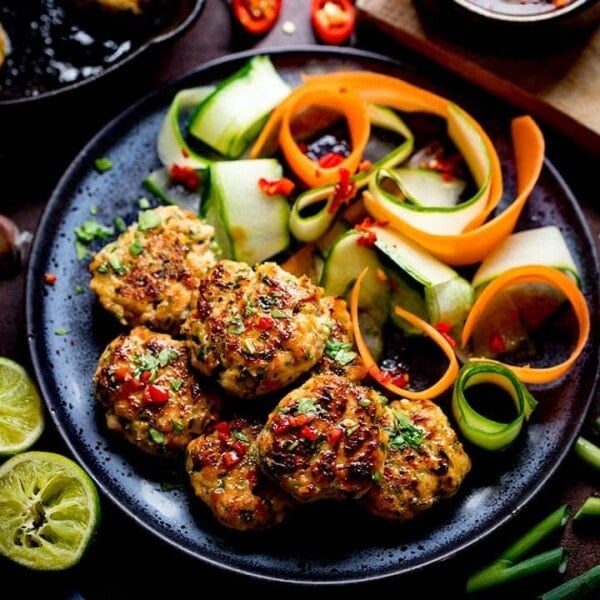

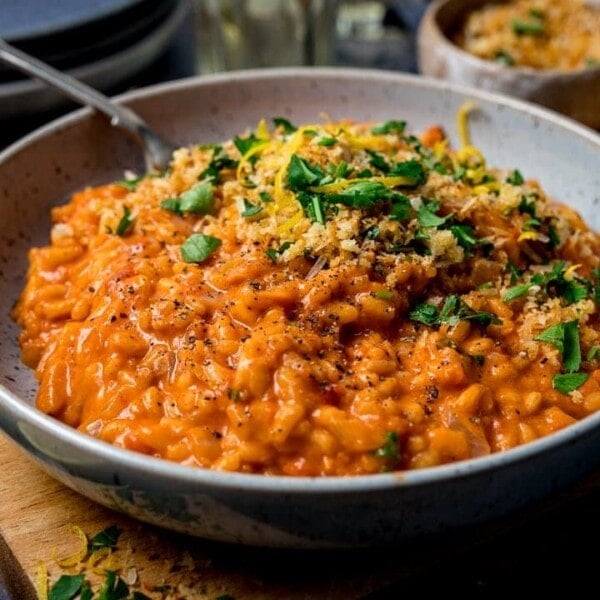
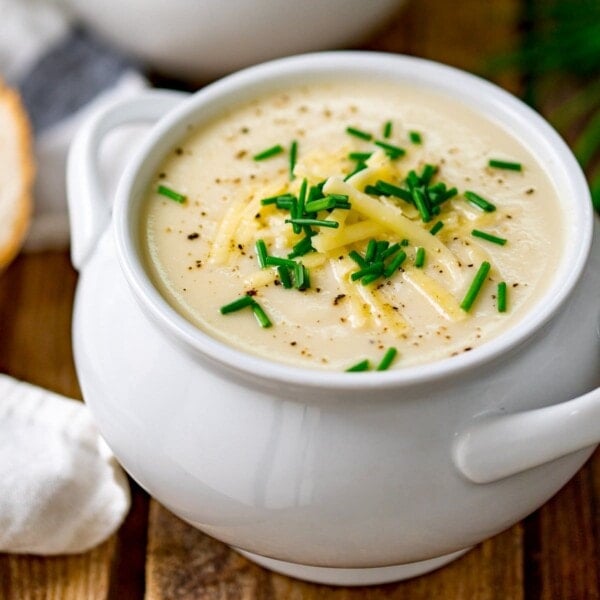
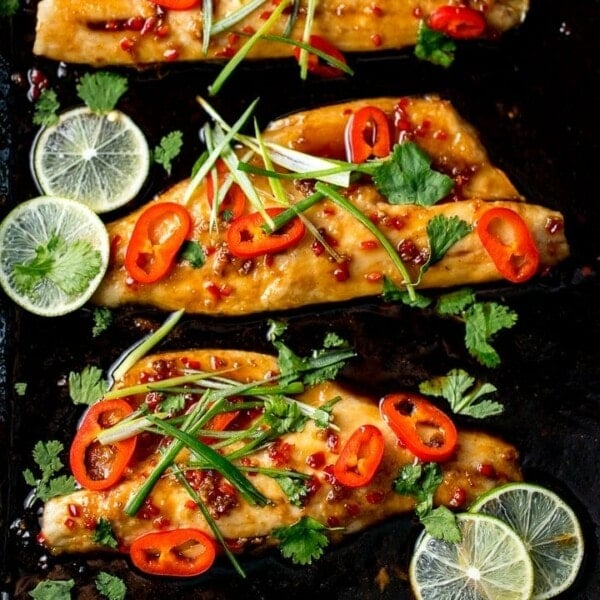







I’m almost 68 years old and currently live in Michigan’s Upper Peninsula which is pasty heaven! I have been eating them since I was a child as there was a local pasty shop, run by two Cornish women, a mother and daughter, who had both come over from Cornwall. My heritage is British, except for a handful of German genes. coming from Reading and a very small village of Siddington. My husband has all Scottish, coming from the Island of Gigha and Fraserburgh. He has been eating pasties since he was a child too. His family all come the Upper Peninsula. When we met and got married, I was so glad that he loved rutabagas and I didn’t have to force him to eat them. At one time we grew them in our garden and were so prolific, we had more than we could ever eat. Our friends wouldn’t take any as they either didn’t like them or didn’t know what to do with a rutabaga. The deer who roam the woods behind our house were very well fed that year! We also have spent our entire lives raising abandoned Border Collies. What an oddity as it wasn’t planned that way! Rutabagas were always a holiday “must have” item. They were peeled, cut into smaller pieces, then boiled and mashing them all up, adding cream ,salt, pepper, and a tablespoon of sugar, as my grandma said the sugar brought out their sweetness. We now live in a small village where my husband grew up in but we met at a job about 350 miles away from there. We moved up here as both of his folks were very sick and my parents had already passed. About an hour and a half from us there is a wonderful pasty store run by three generations of women, where the oldest lady had originally came from Cornwall and those pasties are the best. We have been to the U.K. at least 5 times and have eaten wonderful pasties in the Cornwall area, Stratford-upon-Avon and once in Edinburgh. My mother-in-law also made an oven roasted dish that had rutabagas, salt pork, potatoes, cabbage and carrots which took about 4 hours to bake and fed us for 3 days! Going to the Upper Peninsula is a real treat because once you cross the Mackinaw Bridge, there are pasty shops everywhere, like small never ending roadside stands and almost every restaurant sells them. You sure can identify the good ones from the bad ones as everyone tries to deviate from the “original recipe” ingredients such as no rutabaga, no onion, add a ton of carrots, skip the meat, or even adding parmesan cheese (yuck!). People usually open them up and douse them with ketchup or gravy. Our family, when we open them, just put butter inside, as the melted butter tastes the best anyways. When the weather cools down, so I can turn the oven on, I must get off my duff and make some. Your recipe sounds exactly what I have been used to eating my whole life. We even have a lady up here who calls herself “The Pasty Queen” as she once had an order for 1,000 pasties and made them all herself. She posted her recipe in our local newspaper but I didn’t like it as it had those darn carrots again. Thank you so much for posting it….
Martha Simmonds McNeal
Martha, your comment is so interesting. My family went to Australia in 1924, so the line soon 100 years here. Formerly Isle of Wight.
I plan to shop tomorrow for just the right beef and will think of you when I cook these!
Made 7 of these and got to eat half of one.
I’ve been asked to make 2 more batches for people as they liked them that much.
Don’t hate me but I did add some carrot.
Hated making pastry for years but these turned out really well.
I loved your recipe for Cornish Pasties ut the first time I made them I used store bought pastry. I intend to make it with your recipe this time but I have a question. Is the egg absolutely necessary? My grandson is allergic to eggs and I wondered if I could leave them out or use a substitute such as Ground Flax soaked in water.
Incidentally, my mother came from Cornwall so she used to make it occasionally for us.
Would appreciate your advice.
John
For some reason I did not receive your reply to my question regarding whether I could leave out the eggs from the Cornish Pasty Pastry recipe. Could your repeat your reply?
Thanks,
John
Are your oven temperatures for a fan oven?
Hi Karen, yes they’re for a fan oven.
Thanks
Nickt
Excellent in every particular save one – Cornwall is in the South West of England – the extreme South West – as far away from all the hustle and bustle of the South of England as it’s possible to get without getting your feet wet. Pasties Rule!
Thank you for the recipe and the excellent explanation and tips.
Looks wonderfully,our mob come to Australia from Cornwell in the 70s….1870s.We use mince but not today.Thanks for your help.10 out of 10.Regards Oatsy.
Made these this evening for the first time and loved them, great recipe. My Dad (and Mum) are going to love these. Thank You Nicky
Really easy recipe to follow, made a batch of pasties and they were great.
Thanks Nicky.
This recipe is exactly like the one I’ve been making for 50 years . My mum and dad were from Cornwall . I use rib eye or sometimes sirloin steak instead of the skirt steak . I always add a sprinkle of parsley before sealing them up . I add everyone’s Initial on top with extra pastry , grandkids love them .
Being a Cornishman from Falmouth, I make pasties on a regular basis. Your recipe is spot on but if you want a slight deviation especially if you can’t get swede is to add parsley. I eat mine with Branston pickle and a cup of tea, heaven.
I LOVE Cornish pasties. My mom came over from Scotland (her dad was from Cornwall) and made them when I was younger. I FINALLY went over to the U.K. in 2018 and my cousin made me some. Then they came over in 2019 and she made them using rutabaga and they were still wonderful. She even brought us some brown sauce so we used that instead of ketchup. 🙂
Why have I never tried them with brown sauce? I’ve got to try that!!